
Index:
UPDATED ✅ Do you want to know what a decentralized application is and what are the benefits of using it? ⭐ ENTER HERE ⭐ and Learn All About It
Currently, it is estimated that distributed ledgers have evolved far beyond mere layers of value. Which, basically, it is due to the blockchain which is the information coding system that is based on a single record, agreed upon and distributed in several nodes of a network. Therefore, it can be noted as the ledger where each of the transactions are recordedin the environment of the cryptocurrencies.
Thanks to its potential, new technologies and the number of applications that it allows to develop in areas other than financial transactions, New concepts have been incorporated that are interesting. One of them refers to decentralized applications that are making the blockchain exponentially more useful for companies and businesses.
As a consequence, it is important to know what is decentralized applications that manage to provide more secure transactions. Reason why, next, we teach you What are these applications about?what is their history and origin, how are they characterized, how can they be classified according to their types and what are the most famous decentralized apps so far.
What is a decentralized application and what are they for in computing?
Also called “DApps”decentralized applications are those that operate as a piece of software with a graphical interface that is run and managed by multiple users within a decentralized network. Mainly, are characterized by complete independence, in view of the fact that no central system is in charge of regulating and/or controlling its operation. The new DApps are defined as applications whose operation based on a decentralized network.
So, these are fed by smart contracts that refer to certain programs used for the agreement between one or more parties and thanks to that, all its users have full control of the exercise of the same. They can access different services safely through such applications. Decentralized apps serve to provide more reliable data records because users can enter the public blockchain to keep an eye on the transaction.
In addition to that, they help to obtain more security against intrusions, hacking or any potential sabotage, they also facilitate a payment processing much more effective And till promote greater anonymity because they do not require participants to go through lengthy registration processes. Assessing that, in addition, they can be used in personal computers, smartphones and via the web.
History and Origin What was the first independent app of any government or institution?

Although it is true, the origin of the independent apps of any institution, dates back to 2001. Since, from this moment, the first DApps were known through file sharing protocols or, certain P2P networking applications such as BitTorrent, DC++, Napster, and eMule. Appreciating that, mainly, BitTorrent and DC++ were the most important “per-to-peer” file sharing systems with high resistance to censorship.
In this way, at the beginning of the 21st century, they managed to install this type of service in which the information is managed in a decentralized manner. Well, all these data are found in the network of nodes that are part of such a system and therefore, users had the power to share information from any file referenced by it, just by getting a magnet link or a torrent file.
Later, after 8 years and specifically in 2009coupled with certain more capable technologies, people were able to learn the first official decentralized application using the blockchain. I feel this, the app of the renowned Bitcoin that exhibited the success of the first blockchain DApp in history, thanks to its optimal structure and powerful operation. Which, was created by Satoshi Nakamoto.
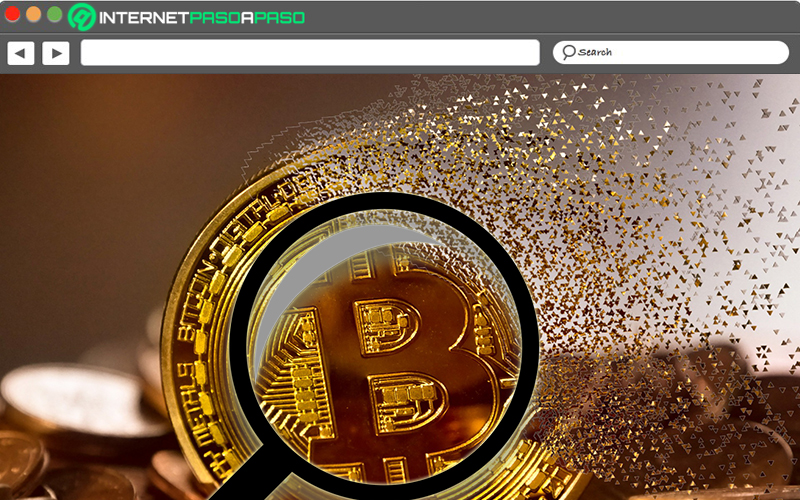
For its part, during the year 2014with the aim of setting aside certain limitations of Bitcoin due to its internal programming language, a new decentralized application was introduced which caught a lot of attention. Which, consists of Ethereum which was introduced by Vitalik Buterin in order to provide the ability to execute “Smart contracts” to massify the concept of DApps.
In this sense, from this moment on, decentralized apps based on the operation of blockchain technology began to transform remarkably, achieving unrivaled popularity. Being that, a situation that could lead to the massive adoption of blockchain technology, enabling new forms of interaction between users, the virtual world and the real world.
What are the main characteristics of decentralized applications?
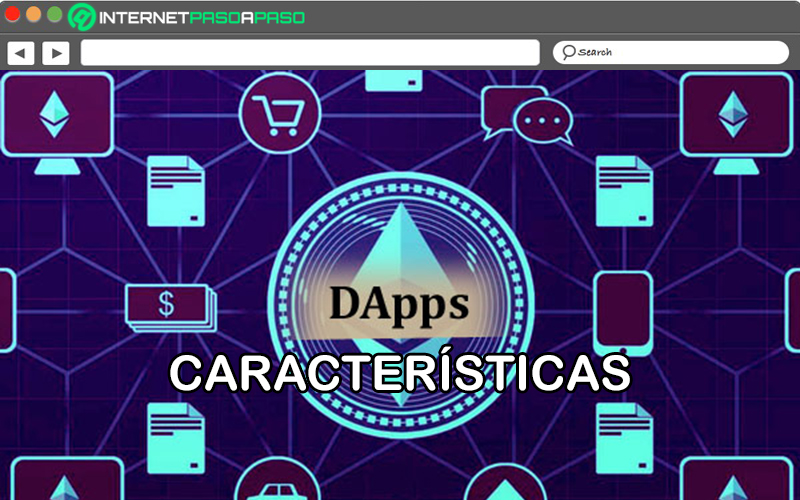
To better understand the nature of the famous decentralized appsit is essential to know what are the characteristics or peculiarities most fundamental that define this type of applications.
That is why, below, we mention these distinctives specifically:
They are disaggregated
Mainly, these applications are distinguished from the rest by their great decentralization or disaggregation. Thanks to this, they can allow users to work on them without the need for the support, control or administration of a central server.
In this way, they achieve avoid the main problems that are untied due to centralization (delays and sabotage of productivity time, dependence between the core and the periphery regarding decision making, excessive rigidity in the hierarchy, etc.). Additionally, make it easy to build applications with a high level of fault tolerance and, by default, they base their registered operations on any autonomous cryptographic technology or on a decentralized blockchain.
They are open source
Another of the most common characteristics of DApps is that have their main source code publicly available or, they are open source. As a consequence, they are classified as very transparent apps and, therefore, users can know the code of the application in all moment.
On the other hand, since they are open source, they also help implement the continuity of any project to be able to follow it and even improve its development. As if that were not enough, it reveals a certain obligation to enjoy a consensus that is autonomous and unanimoustherefore, all changes will have to be agreed by the majority of network users and in this way, the DApps increase inclusion among its users.
They have a high level of security
This is another particularity that must be taken into account regarding decentralized applications. Considering that this level of security comes from the programming of this type of applicationswhich is carried out embedded in the blockchain and therefore, its intrusion or attack is a practically impossible task by malicious third parties.
As a result of this great security, DApps manage to guarantee that their environment cannot be modified in any way, because cryptography is used, by default, when working in conjunction with a blockchain. Apart from that, said robustness allows the information or data to only be seen by the people who originate it, while the rest of the user will only be able to check its validity.
Another interesting point that helps the security of decentralized applications to be remarkable at all times is that they do not focus on storing information on external servers or cloud services. With this, they achieve minimize the risks regarding the vulnerability of the privacy and/or integrity of each person.
Your heritage on the blockchain
By nature, decentralized applications interact on the blockchain in which their “Smart contract” is executed. As a consequence, each interaction can generate a data entry in the blockchain and these are stored in a cryptographic way to guarantee the greatest possible security and transparency. On the other hand, the fact that a DApps works on a blockchain it means that, it allows to verify if in each interaction a consensus protocol is used.
This, from Proof of Stake (PoS) or with Proof of Work (PoW) chosen by the developer of the application in play. Thanks to that, guarantees the same level of reliability applicable to the blockchain on the app. Now, thanks to all these characteristics and its own nature, DApps reveal remarkable advantages compared to traditional applications that it is essential to take into consideration.
Therefore, below, we detail the most relevant of all:
- There are no service drops. This, in view of the fact that they are decentralized and everything is distributed in nodes, instead of central servers. Therefore, if any part of the network presents this type of failure, the rest can continue to function normally.
- They have their own encryption of a block chain. From this, it provides much greater security and as a consequence, the sensitive data of each user will remain shielded against manipulation or computer attacks and theft by third parties.
- Information published in DApp format cannot be tracked. So, no central entity will be able to monitor said information in order to know the preferences of users and thanks to that, it makes it impossible to use personal data for commercial purposes.
- Increased trust and auditability. Well, since they handle an open code, it is accessible and understandable for expert users. Therefore, they show great transparency and generate much more trust on the part of people. Valuing that, apart from this, the transaction information is easy to audit by users or by third parties.
- More efficient payment processing. Since you don’t need to integrate with a fixed payment provider to handle user funds, your payment processing is easier and faster. Taking into account that transactions can be made using cryptocurrencies directly.
Types of decentralized apps How are these programs classified?
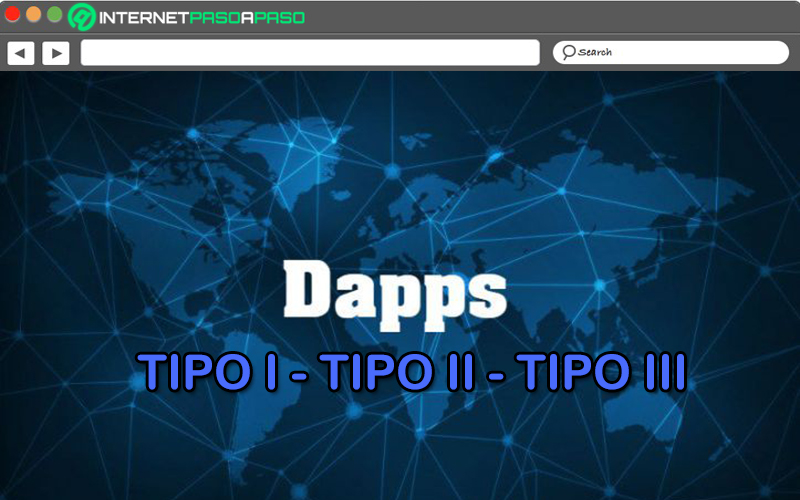
In view of the decentralized applications they can have various functions, as well as a different use in terms of the blockchain; some types of DApps are distinguished.
Therefore, in this section of the post, we will let you know what are the three fundamental categories that provide this kind of programs:
Type I
Is about the main category of all as far as decentralized applications are concerned. Basically, the DApps Type I they have their own blockchain or they have the same infrastructure. As a consequence, they do not depend on any blockchain to run or on another blockchain.
Under this peculiarity, the oldest decentralized app that is known, without a doubt, is the Bitcoin that was born as the first blockchain DApp in the world. In addition to this, in this type of decentralized application, there are also others such as Ethereum, Litecoin, Dash, Monero and more altcoins that have managed to develop their own blockchains.
Type II
Consists of the second typology of DApps and they are those that run on the blockchain of a type I decentralized application, basically. For this reason, they mainly stand out for not having their own block chain and using the one contained in the type I classification apps.
So, these depend on a blockchain and its characteristics to function. However, they have the ability to generate or issue your own tokens in order to reward all the participants of the network in question. For this, they usually make use of the tokens of the chain in which they operate, by default.
A) Yes, one of the most notable examples is Golem which corresponds to a decentralized app that works on the blockchain of Ethereum. In that sense, golem was designed with the aim of allowing its users manage to rent computing resources to be able to process data for various uses. Apart from this, also distinguished by Omni as another recognized Type II DApps which is built on top of the Bitcoin network and, by default, operates on its blockchain, besides that he uses his tokens.
Type III
Like the previous ones, the type III decentralized applications they do not own a chain of blocks of themselves and, in this case, they completely depend on type II when generating their tokens. Which means that basically they have to make use of the DApps type II for its operation or, to carry out its operations.
So, for example, some type III decentralized apps can be an Office extension in an operating system. Because they could create own payment systems and cryptocurrencies, as long as they are based on a type II DApp. On the other hand, one of the most common of these, is Safe Network which is supported by Onmi and has its own cryptocurrency (known as “safecoin”) and thanks to that, it also has its own app in a distributed way. like the uRaiden which is based on Raiden Network.
List of 5 most popular decentralized apps
Until the beginning of 2015, there were only around 25 decentralized apps all over the world world. However, due to their great invention and the benefits they provide, this number increased in a remarkable way and for this reason, it is pointed out that have had exponential growth. Which is why, at this time, more than 3,000 DApps are distinguished. However, only a few of them have caught the attention of numerous users worldwide and thanks to this, have become the most famous of all.
Therefore, in this section of the post, we will mention which are the 5 most popular decentralized apps, so far:
MakerDAO.com
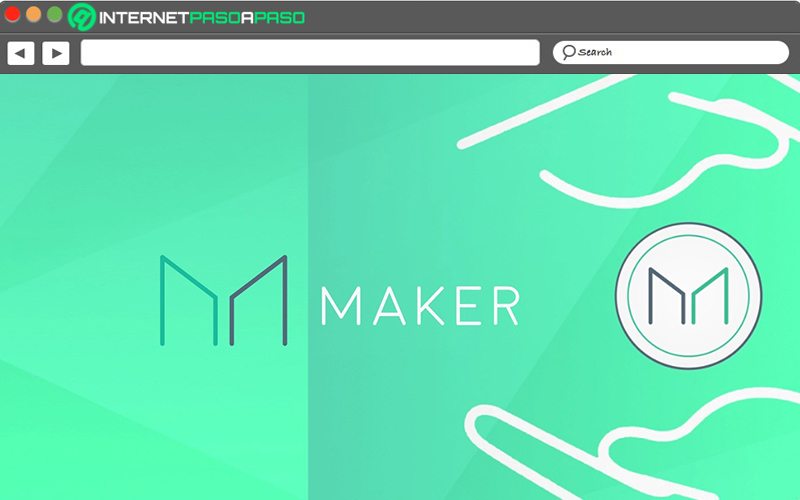
It is estimated as one of the most successful projects in the entire blockchain of Ethereum. Under this condition, MakerDAO can be defined as a service based on a decentralized platform which deals with the issuance of stablecoins or “stablecoins” on the concept of loan. Where, users can acquire the greatest possible transparency.
In this way, these people will only have to access the DApp in question, deposit the amount of money they want to be able to receive the same value in cryptocurrencies. Thus, since the cryptocurrency is backed by the amount deposited, its price remains the same as the US dollar (but with much more possibilities). Being this, a service available worldwidefortunately.
On the other hand, this project is supported by Wallets and thanks to that, it provides instant payments and really low transaction fees. Taking into account that, unlike other platforms, neither the user nor the project require a centralized third party to support the transactionsince the operations are disaggregated in their entirety.
Due, MakerDAO manages its own governance system when making or using smart contracts to maintain the persistence of the “stablecoins” and also regulate all operations issued. In addition to this, it provides optimal elements of privacy and has your DAI token which is the only censorship-resistant stablecoin, so far.
CryptoKitties.com
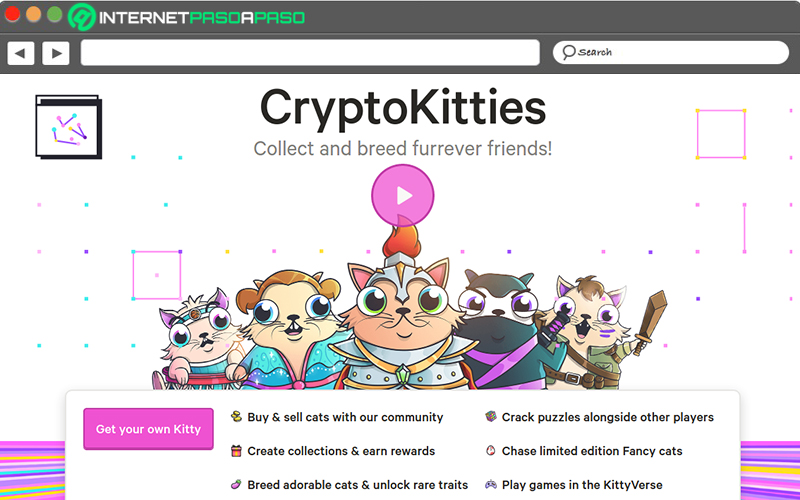
It refers to one of the first games in the world that has been created thanks to blockchain technology. Thus, specifically, a DApp created on the Ethereum blockchain and therefore, meets the characteristics of a type II decentralized application. Taking into account that, despite the fact that it is one of the oldest, the truth is that still retains its popularity today.
Thanks to this, it is considered an optimal way to get used to decentralized technology and for that reason, was the sensation during the year 2017. Which consists of a game that allows collect “unique virtual cats”, where each of them have exclusive characteristics and due to their extreme rarity, they acquire a great value that implements what is the cryptocurrency of the game. Well, these “kittens” can be bought, raised and sold virtually in order to make a profit.
Thus, CryptoKitties offers a fun way to earn small amounts of cryptocurrencies in an entertaining environment which has been developed on the blockchain. Taking into account that, thanks to the interest it has managed to generate, in an instant was responsible for 10% of all Ethereum-based transactions. As if that were not enough, it is also distinguished as a totally reliable project to start getting involved in the crypto industry.
Steemit.com
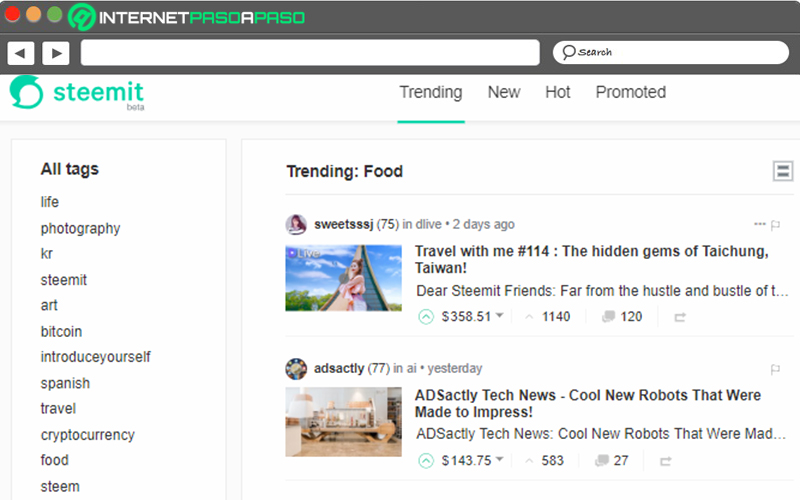
This is an app based on Steem and it acts as a social platform for bloggers, basically. Consequently, users have the possibility to easily create a personalized account and once it is verified, they will be able to write blog posts, add photos, tags or any other element to enrich said writings. Which, in most cases, they are linked with the blockchain and crypto industries.
Thus, just by writing and publishing, Steemit allows its users to earn money and therefore, the amount of content found there is increasing; so it is considered one of the most popular DApps at the moment. Taking into account that said money can be acquired as long as your publications are interesting enough for other people so that they are motivated to give you rewards based on small amounts of Steem virtual currencies.
For its part, to better understand its operation, we highlight that this application manages a system of “likes” or “likes” which serves as a filtering technique managed by the community itself with a tendency to help make certain posts of better quality stand out above the rest. While, in the same way, other posts tend to spread out and end up lost among all the content that is published on the social network.
IPSE.io
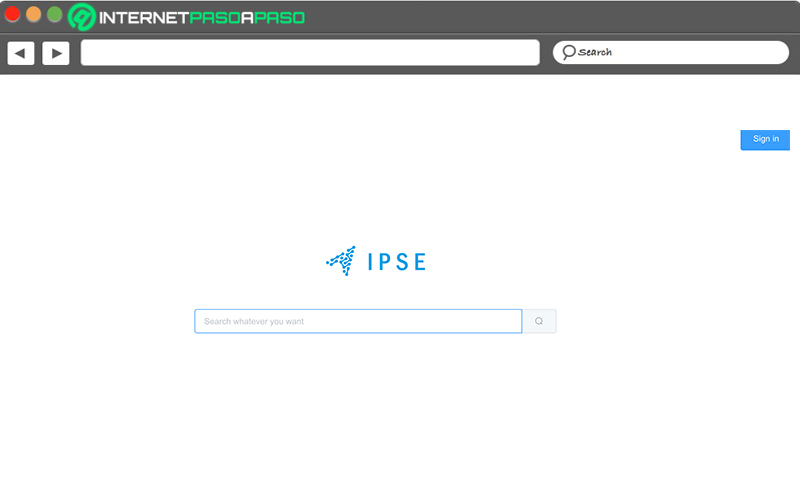
Consists in a decentralized search engine based on EOS which, with great probability, is one of the best DApps that exist today. Thus, it is a project that uses its own interplanetary file system (IPFS) What a hypermedia distribution protocol.
For its part, the IPSE operates as a regular search engine that, unlike its competitors and/or the most used solutions, does not present advertisements to provide an optimal experience. Additionally, it focuses on address people’s privacy concerns (because it safeguards their data to the highest level) and even, offers token rewards that are a good incentive for people to participate in it. Thanks to all this, it has considerable potential for the future.
Bank-Of-TRON.com
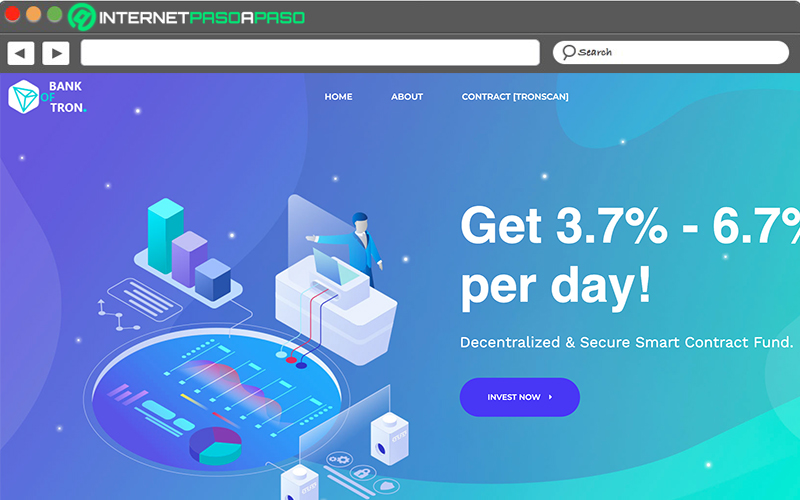
Another well-known DApp that, specifically, is based on the TRON blockchain. In that sense, in view of its large number of users per day, it has been classified as the most popular TRON application among all those that exist. Whereas, according to certain data, gathers around 12,220 daily active users and this number is expected to increase further, over time.
For its part, it refers to a decentralized application that is based on smart contracts of the TRON ecosystem and thanks to that, it is an immutable app. Among other details, it is distinguished as a fully automatic DApp from which users receive dividends directly from the bank, as well as high rewards for referrals and investmentsinstinctively.
Computing